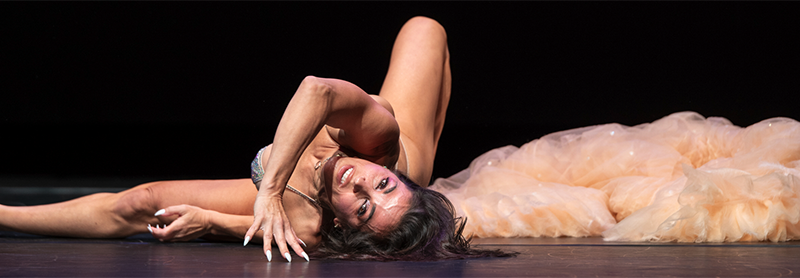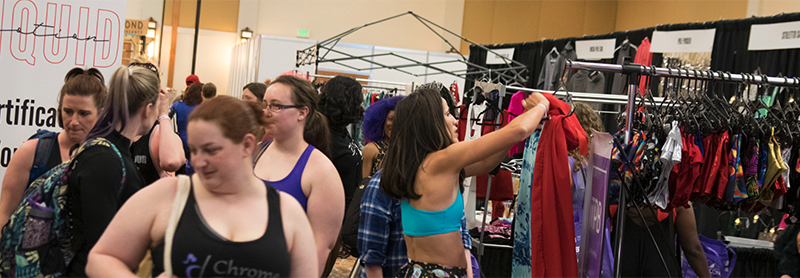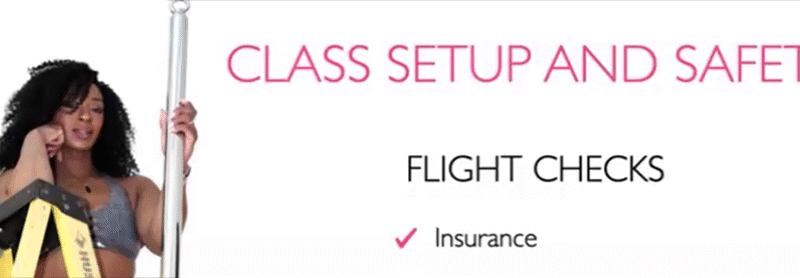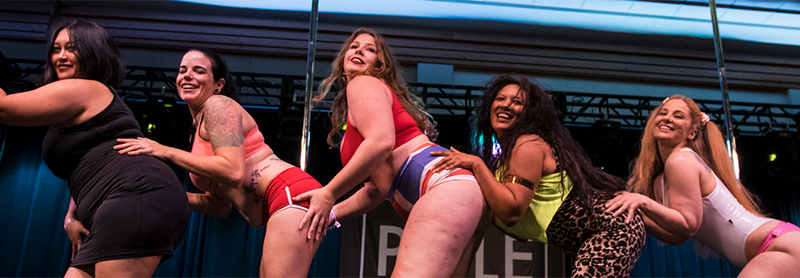A train-cation is a trip (usually away from home) where you focus for a specific…

How can we be more inclusive to neurodiverse polers?
These recommendations are from Jojo Fox’s webinar ”Neurodiversity in pole – what is it? How can we be more inclusive as teachers and students?” held on November 19, 2024. Members can view the entire webinar at this link. Jojo notes in the webinar that this is based on her personal experience and her post-graduate work in education. Similarly, this resource does not claim to be all-encompassing. Each person’s brain chemistry is different. Consider this a starting point.
You may feel you relate to many of the items described in this post. This post is not meant to diagnose you with a neurodivergence, diagnoses can only be done by trained professionals.
6 overall highlights from the webinar
- A lot of neuro-diversities overlap
- Stress and low self esteem abound in neurodivergent people
- Let people learn at their own pace
- Hypermobility is prevalent in over 50% of neurodivergent people
- Everyone is an individual with individual needs
- Neurodivergent people are often drawn to creative endeavors.
Specific tips for each neurodiverse diagnoses
Here are the tips Jojo gave for pole instructors and studio owners to help students with Autism Spectrum Disorder (ASD), Dyslexia, Dyspraxia (DCD, DSD), and ADHD.
Many of the tips for certain diagnoses overlap, and many of these diagnoses have high comorbidity rates.
Autism Spectrum Disorder
How pole instructors and studio owners can help:
- Writing down choreo/tricks on a whiteboard or encourage students to bring notebooks.
- Attaching a word to things can help people recall.
- Repetition!
- Start with one thing, then add another (like the old school “shopping list” game).
- Encourage people that they don’t have to “get it right,” it’s a safe space, and there is room to explore.
- Get consent each and every time you touch someone, even if consent has been given before. Touch can send the brain into a state of overwhelm.
- Be clear about how “sensational” (in terms of generating sensation) a trick will be.
- A dirty floor may become a fixation—keep it as clean as you can!
Dyslexia
How pole instructors and studio owners can help:
- Be patient, those with dyslexia may take up to 10x longer to learn a skill.
- All issues discussed are amplified on a person’s nondominant side, so be extra patient!
- Auditory processing difficulties can lead to issues receiving multiple cues/corrections at once, give corrections one at at time.
- An “eyes glazed over” look is not necessarily a person spacing out, they may be attempting to process all the information given (Jojo calls this “buffering”), never assume they are spacing out.
- People with dyslexia may not have the words to express a problem they are having.
- Be aware of those who are drilling things over multiple sessions.
- Give people space to practice their own combinations.
- Giving people “homework” that they can drill during an open pole session or on their home pole.
- A copy of lyrics (for choreo classes) may help student mark the choreo even if they don’t have access to a pole between classes.
- Student may relate to a part of the music better than counting.
- Use clear terminology (don’t change it up between instructors at the same studio).
- Don’t use left and right, giving direction in relation to the pole is better.
- Give corrections after and attempt at choreo or a trick.
- Giving input during the trick can be overwhelming!
- Give demonstrations from different angles (facing students or facing away from students, etc.).
- Don’t rush someone who is “buffering.”
- Allow individuality in choreo, let people do what makes the most sense for their brain and body.
Dyspraxia (DCD, DSD)
How pole instructors and studio owners can help:
- Be patient, especially with fiddly tasks like putting on heels.
- Give time for putting on heels before class.
- May struggle to learn choreography.
- Repetition in learning (repeat choreo in multiple sessions).
- May have many of the same sensory issues as ASD (see tips above).
- May have actively avoided physical activity when younger due to clumsiness caused by dyspraxia, leading to a lower baseline fitness level.
ADHD
How pole instructors and studio owners can help:
- Teach in a way that is praise led, utilize the “feedback sandwich” method of a positive comment, the feedback, and another positive comment.
- Don’t discourage stimming.
- May be better for them to do the choreo as it’s being demonstrated (rather than watch the demo first).
- Don’t single people out for being not on task.
- If someone is “zoning out” that may just be their “focus face.”
- May be better to teach a fast choreo and let them get the vibe rather than getting super technical
- Incorporating mindfulness techniques like breathwork can be very grounding.
- Focus on one thing at a time can work as an anchor.



